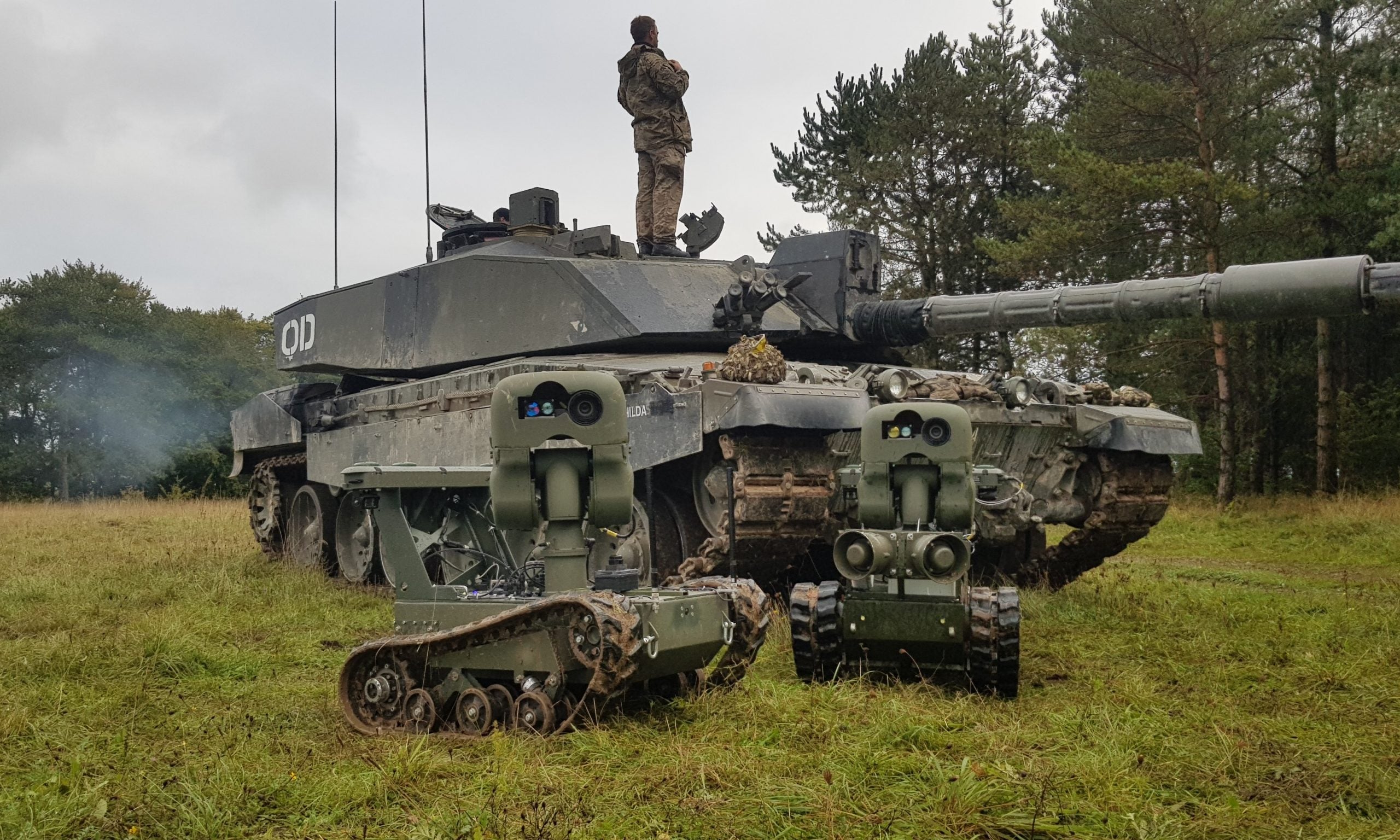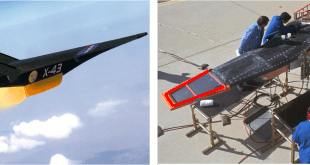Psychological warfare involves the planned use of propaganda and other psychological operations to influence the opinions, emotions, attitudes, and behavior of opposition groups. The targets of such propaganda campaigns can include governments, political organizations, advocacy groups, military personnel, and civilian individuals.
While all nations employ it, the U.S. Central Intelligence Agency (CIA) lists the tactical goals of psychological warfare (PSYWAR) or psychological operations (PSYOP) as: Assisting in overcoming an enemy’s will to fight; Sustaining the morale and winning the alliance of friendly groups in countries occupied by the enemy; and Influencing the morale and attitudes of people in friendly and neutral countries toward the United States
Psychological warfare is ancient as warfare itself. Genghis Khan, leader of the Mongolian Empire in the 13th century AD believed that defeating the will of the enemy before having to attack and reaching a consented settlement was preferable to actually fighting. The Mongol generals demanded submission to the Khan, and threatened the initially captured villages with complete destruction if they refused to surrender. If they had to fight to take the settlement, the Mongol generals fulfilled their threats and massacred the survivors. Tales of the encroaching horde spread to the next villages and created an aura of insecurity that undermined the possibility of future resistance.
The Khan also employed tactics that made his numbers seem greater than they actually were. During night operations he ordered each soldier to light three torches at dusk to give the illusion of an overwhelming army and deceive and intimidate enemy scouts. He also sometimes had objects tied to the tails of his horses, so that riding on open and dry fields raised a cloud of dust that gave the enemy the impression of great numbers. His soldiers used arrows specially notched to whistle as they flew through the air, creating a terrifying noise. Another tactic favoured by the Mongols was catapulting severed human heads over city walls to frighten the inhabitants and spread disease in the besieged city’s closed confines.
According to Truthstream Media there is compelling evidence that since at least the early 1990s, the US military has been exploring the possibility of creating gigantic holograms that could be used for large-scale deception missions by special operations forces. They explain that these efforts were reported by the Washington Post in February 1999 who revealed that the US government was considering projecting a depiction of Allah over Baghdad as part of military action to destabilise Saddam’s regime in the first Gulf War. Truthstream Media also point out that over 20 years ago military research had already developed software able to replicate anyone’s voice using only a 10 minute sample of speech.
Psychological warfare is one of the elements of China’s Three warfare strategy. Chinese writings often refer to the “three warfares” (san zhan): public opinion warfare, psychological warfare, and legal warfare. Chinese analyses almost always link the three together, as they are seen as interrelated and mutually reinforcing. In order to be as effective as possible, both psychological warfare and legal warfare require the use of public opinion warfare. Public opinion warfare and legal warfare require psychological warfare guidance so that their targets and methods can be refined. Public opinion warfare and psychological warfare are, in turn, strengthened by information gleaned through legal warfare.
A s the U.S. military turns its attention from the Middle East to conflict with Russia and China, American war planners are advising that the United States greatly expand its own online “psychological operations” against Beijing. Military analyst David Maxwell, a former Special Ops soldier himself, advocated for a widespread culture war, which would include the Pentagon commissioning what he called “Taiwanese Tom Clancy” novels, intended to demonize China and demoralize its citizens, arguing that Washington should “weaponize” China’s one-child policy by bombarding Chinese people with stories of the wartime deaths of their only children, and therefore, their bloodline.
Governments also engage in wide-scale psychological operations (PSYOPs) to influence the behaviour, emotions and objective reasoning of their targets. “One of the most famous example was Colin Powell’s speech in the UN in 2003 where he presented false information about the so called weapons of mass destruction in Iraq which again lead to the disastrous war on Iraq. Norway’s war on Libya, which the whole Parliament supported, and which destroyed that country, was, as is well known, built on lies that Moammar al Gadaf was about to kill his own people,” writes Pål Steigan.
Military psychological warfare methods and techniques
Military defines it as the planned tactical use of propaganda, threats, and other non-combat techniques during wars, threats of war, or periods of geopolitical unrest to mislead, intimidate, demoralize, or otherwise influence the thinking or behavior of an enemy. To achieve their objectives, the planners of psychological warfare campaigns first attempt to gain total knowledge of the beliefs, likes, dislikes, strengths, weaknesses, and vulnerabilities of the target population. According to the CIA, knowing what motivates the target is the key to a successful PSYOP.
Simply a form of cleverly “weaponized” information, PSYOP propaganda may be disseminated in any or all of several ways: Face-to-face verbal communication; Audiovisual media, like television and movies; Audio-only media including shortwave radio broadcasts like those of Radio Free Europe/Radio Liberty or Radio Havana; and Purely visual media, like leaflets, newspapers, books, magazines, or posters
Military may employ Demoralization by distributing pamphlets that encourage desertion or supply instructions on how to surrender, Shock and awe military strategy such as that used in the Iraq War by the United States to psychologically maim, and break the will of the Iraqi Army to fight.
Other methods are Projecting repetitive and annoying sounds and music for long periods at high volume towards groups under siege like during Operation Nifty Package, propaganda radio stations, such as Lord Haw-Haw in World War II on the “Germany calling” station, The CIA has extensively used propaganda broadcasts against the Cuban government through TV Marti, based in Miami, Florida. However, the Cuban government has been successful at jamming the signal of TV Marti.
Renaming cities and other places when captured, such as the renaming of Saigon to Ho Chi Minh City after Vietnamese victory in the Vietnam War, False flag events, Use of loudspeaker systems to communicate with enemy soldiers, Terrorism and The threat of chemical weapons.
More recently, it has been used by totalitarian regimes such as Fascist Italy, Nazi Germany, and militaristic Japan. It was used during WWII by both the US and Germany. It was used by US forces in Panama and Cuba, where pirated TV broadcasts were transmitted, as well as Guatemala, Iran, the first Gulf War, Vietnam, and other places.
Recently there has been increasing use of modern technology to manipulate public perception. For instance, a military page on voice-to-skull technology stated that “sound modulation” employed in V2K technology could be used to implant “subliminal messages”.
Manipulate brain waves via electromagnetic waves like radio waves
A PhD neuroscientist/physician named Jose Delgado said that manipulation of the brain via electromagnetic waves like radio or microwaves can manipulate the brain at low frequencies without over heating or causing damage.
In a study led by Rodney Croft, of the Brain Science Institute, Swinburne University of Technology in Melbourne, Australia, tested whether cell phone transmissions could alter a person’s brainwaves. The data showed that when the cell phone was transmitting, the power of a characteristic brain-wave pattern called alpha waves in the person’s brain was boosted significantly. Alpha waves fluctuate at a rate of eight to 12 cycles per second (Hertz). These brainwaves reflect a person’s state of arousal and attention. Alpha waves are generally regarded as an indicator of reduced mental effort, “cortical idling” or mind wandering.

In the second study, James Horne and colleagues at the Loughborough University Sleep Research Centre in England devised an experiment to test this question. The result was surprising. Not only could the cell phone signals alter a person’s behavior during the call, the effects of the disrupted brain-wave patterns continued long after the phone was switched off. “The significance of the research,” he explained, is that although the cell phone power is low, “electromagnetic radiation can nevertheless have an effect on mental behavior when transmitting at the proper frequency.” He finds this fact especially remarkable when considering that everyone is surrounded by electromagnetic clutter radiating from all kinds of electronic devices in our modern world.
Defense Advanced Research Projects Agency psychological warfare tool: “Sonic Projector”
“The Air Force has experimented with microwaves that create sounds in people’s head (which they’ve called a possible psychological warfare tool), and American Technologies can “beam” sounds to specific targets with their patented HyperSound,” wrote Sharon Weinberger and “yes, I’ve heard/seen them demonstrate the speakers, and they are shockingly effective”.

DARPA had earlier launched their Sonic Projector” program: The goal of the Sonic Projector program is to provide Special Forces with a method of surreptitious audio communication at distances over 1 km. Sonic Projector technology is based on the non-linear interaction of sound in air translating an ultrasonic signal into audible sound. The Sonic Projector will be designed to be a man-deployable system, using high power acoustic transducer technology and signal processing algorithms which result in no, or unintelligible, sound everywhere but at the intended target. The Sonic Projector system could be used to conceal communications for special operations forces and hostage rescue missions, and to disrupt enemy activities.
U.S. military is developing a laser based sound weapon
Using UGVs for decoy and deception
At the British Army’s Army Warfighting Experiment (AWE) 20, British robotics and uncrewed ground vehicle (UGV) developer Digital Concepts Engineering (DCE) impressed army officials with its UGVs equipped with loudspeakers that can be used to confuse the enemy. The company demonstrated how its X2 and X3 UGVs fitted with a tactical public address system could be used by the army to give the illusion of more or bigger vehicles, or disrupt verbal communications in a close-quarters combat scenario.

During the experiment, the company’s X2 and X3 – an upgraded X2 designed to be faster and quieter to meet British Army needs – were fitted with the same Vitavox Outacom Tactical Public Address system fitted to all variants of the army’s new AJAX armoured vehicle. DCE’s partnership with Vitavox began last year, at the launch of AWE 20’s first phase. Digital Concepts Engineering also demonstrated how UGVs could be used to support a commander’s situational awareness, giving them a better idea of what is outside the doors of an armoured vehicle, improving safety for dismounted personnel.
DCE director Lionel Nierop explained to Army Technology: “We pitched the concept of a UGV enabled with the tactical public address system for several things. One of those was around the fact that you could send the vehicle forwards and communicate with people on the ground, rather than needing to do that with dismounts. So, you can partly bridge the gap between the mounted soldier and the dismounted soldier. “It could be used very successfully in the info ops and influence ops role inherent with peace support, peace enforcement, public order and COIN [counter-insurgency] type operations.
“At the moment, as soon as dismounts come out of the back of a Warrior, they’ve only got their personal role radio (PRR), it is very difficult for commanders to tell them what’s going on the ground.” Filling in this gap, DCE sees the UGV as a means to bridge between the commander, dismounts and mounted personnel, with the vehicle allowing a commander to see what troops are seeing, as well as allowing them to communicate with the troops through the robotic vehicle.
Holographic projectors
One 1999 Air Force Manual purportedly writes of the device thus: The holograph projector plays a three-dimensional visual image in a desired location, removed from a display generator. The projector can be used for psychological operations and strategic perception management. It is also useful for optical deception, and cloaking, providing a momentary distraction when engaging an unsophisticated adversary. And it has capabilities for precision projection of three-dimensional visual images into a selected area. Supports Psy-Op and strategic deception management and provides deception and cloaking against optical centers.

In Japan, for instance, there was a demonstration of such strange technology in 2006, in which Japan’s National Institute of Advanced Industrial Science and Technology (AIST) used lasers to project real three-dimensional images in mid-air. The device used lasers that were fired in rapid successive bursts to create various shapes over it, during which time the heat emitted from the equipment caused the air to expand and crackle with an effect like a series of tiny explosions, as well as creating an ozone-like smell.
In 2012, the country of China apparently unleashed a holographic image on a massive scale for the populace of the town of Guangzhou. It was here that an entire holographic city was allegedly beamed into the air, along with a UFO for good measure, which many people supposedly filmed. The problem with this theory is that the holographic technology that we know of at present is not able to achieve totally realistic images that could truly fool a person, is not able to display motion but rather only static images, and the images are not able to be projected particularly long distances or through obstacles, at least not yet, writes Brent Swancer in Holograms and the World of the Weird.
https://www.youtube.com/watch?v=FSqa3hE0z4g
References and Resources also include:
https://www.corbettreport.com/psyops-101-the-technology-of-psych-warfare/
https://www.scientificamerican.com/article/mind-control-by-cell/
 International Defense Security & Technology Your trusted Source for News, Research and Analysis
International Defense Security & Technology Your trusted Source for News, Research and Analysis


